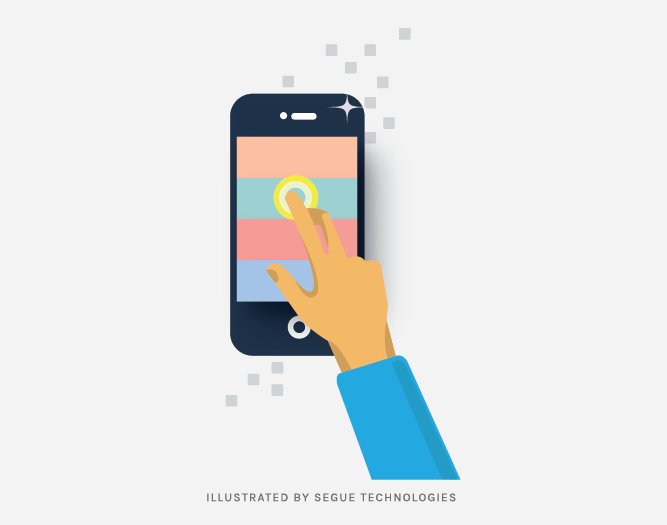According to The Social Skinny, there are over 1.2 billion people accessing the web from their mobile phones. This number is continually growing, ensuring the progression and need for mobile websites. The truth is, most consumers won’t get their hair cut by you, go to your gym, or eat at your restaurant if they are unable to find what they are looking for on your mobile website. For this reason, usability on mobile sites is more crucial than ever.
It is important for mobile designers to have an understanding of what leads to a great user experience. A design that focuses on target users, minimizes distractions, and boosts desirability will ensure your users’ experiences will be positive ones.

Focus On Target Users
The first step in creating any mobile website is to specifically define who the target users are. A great approach to this is creating user personas. In my experience of using user personas, I have found that they help boost productivity in all of my projects. Creating user personas helps me become more acquainted with the target user, making it easier for me to create a design based around their needs.
Clarifying user needs,the base of your UX design requirements, beforehand using User Personas helps to diminish the chance of last-minute major design changes. Users will be happy and engaged with your mobile website when the design of the site aligns with expectations of the individual users.
Minimize Distractions
Users want to get to from point A to point B to find the content they are looking for quickly. Avoid designing any visual elements that could divert a user’s attention. Below is a list of best practices for minimizing distractions:
- Simplify the Layout: Simplifying a mobile site’s layout will enable users to easily discover the content they are searching for. Remember: Negative space (or whitespace) is not a bad thing. A spacious layout helps users digest information more easily. Also, use effective placement for all elements. Key elements such as the navigation and search bar need to be the most accessible.
- Be Consistent: Consistency in color will also boost usability and keep layouts simple. Color is a great visual cue in mobile design and with such a small screen, a cohesive color palette is vital for guiding users throughout your site. For example, having the same color call-to-action buttons is a must in all my design projects because it allows a user to always know what is clickable.
- Show Hierarchy. You can minimize the complexity of your mobile site by having clear titles, marking keywords in bold or italic, and having full width buttons. This is a great way to showcase content and organize the site’s structure, allowing important content to become more distinguishable.
- Use Effective Writing: Use language that is understandable to the site’s target users. A great example of this is the Virgin America’s mobile website. They have a hamburger menu to house their whole navigation, but below that they have listed the two main navigational points – Check in & Manage. These are short concise words that are instantly recognizable by their users. Another way to minimize distractions in writing is by breaking taglines into short key phrases. This allows for a more scannable layout, enabling users to find what they are searching for quicker.
Boost Desirability
Ultimately, when a mobile website’s design is user-centered, it becomes more valuable to your target users. It is all about minimizing distractions and simplifying the layout to make your site showcase important content. By designing for your target audience’s needs, you will promote positive user engagement. Users who can easily navigate through your site to what they need will continue to come back- and that’s a win-win situation for everyone.